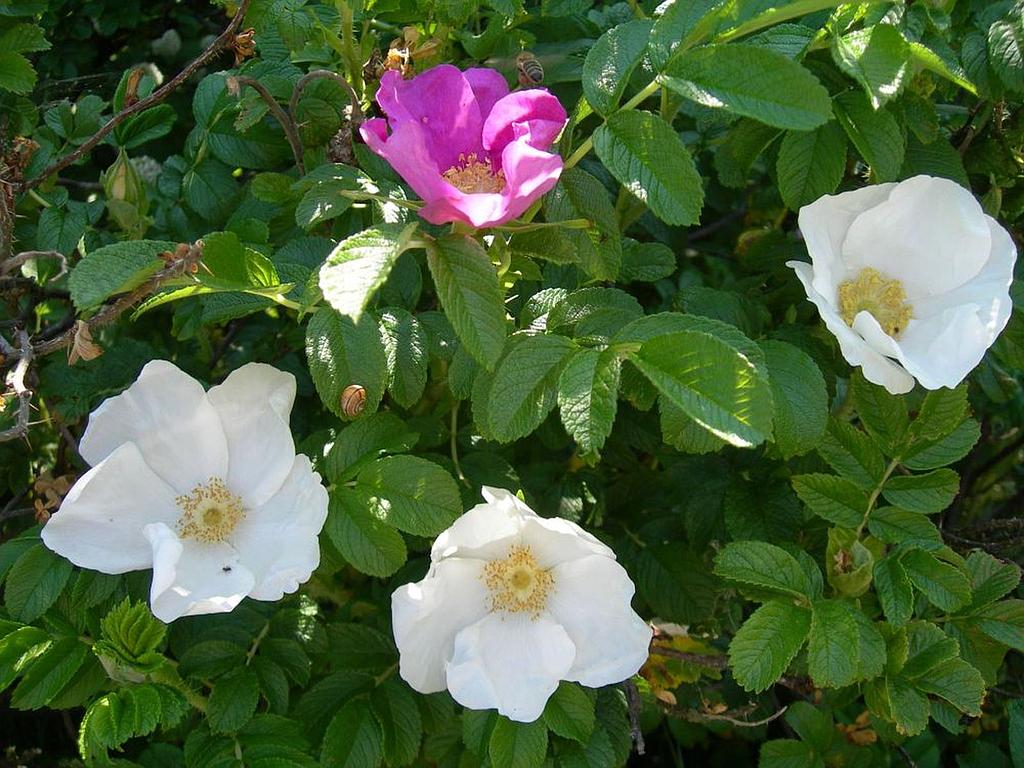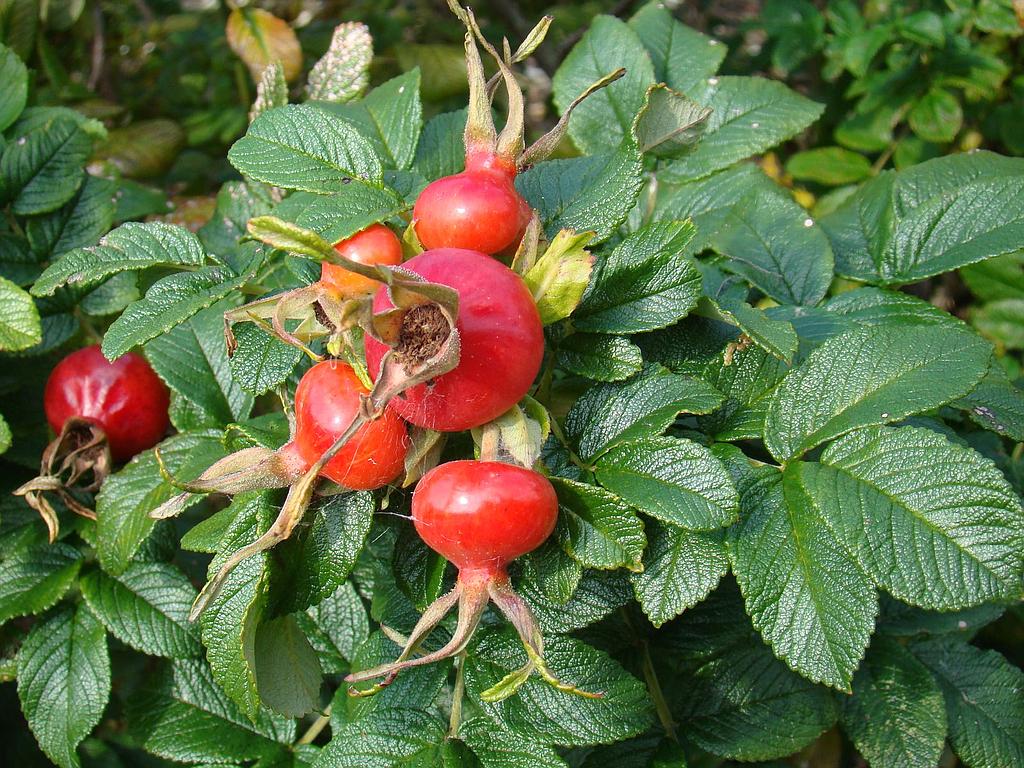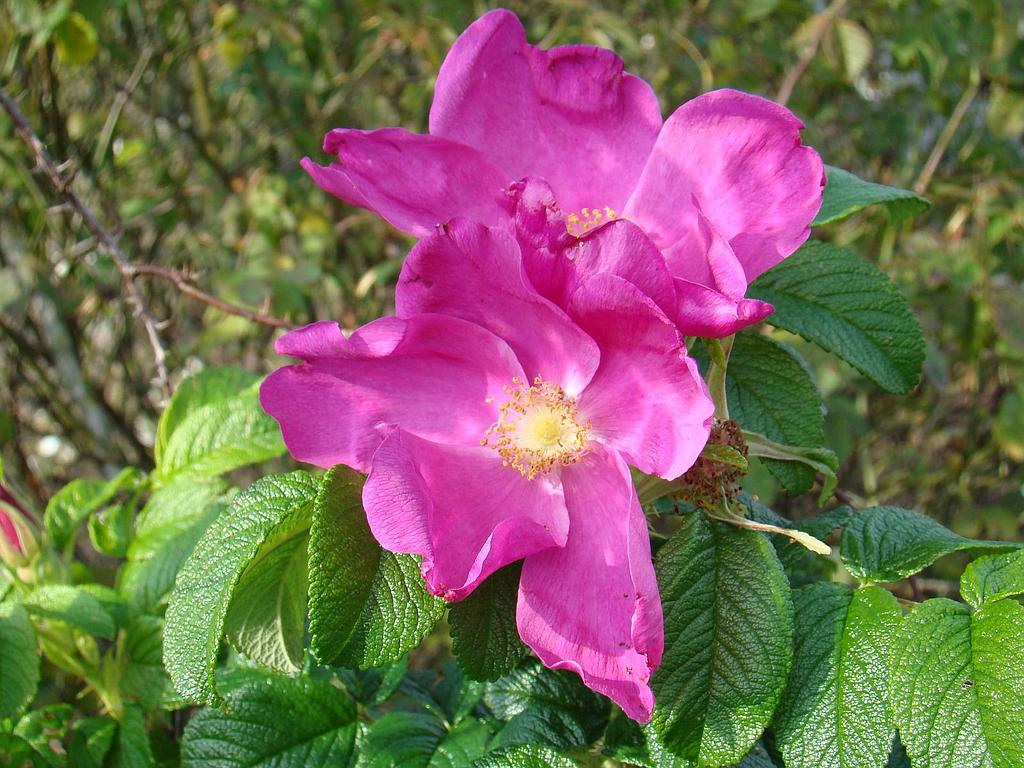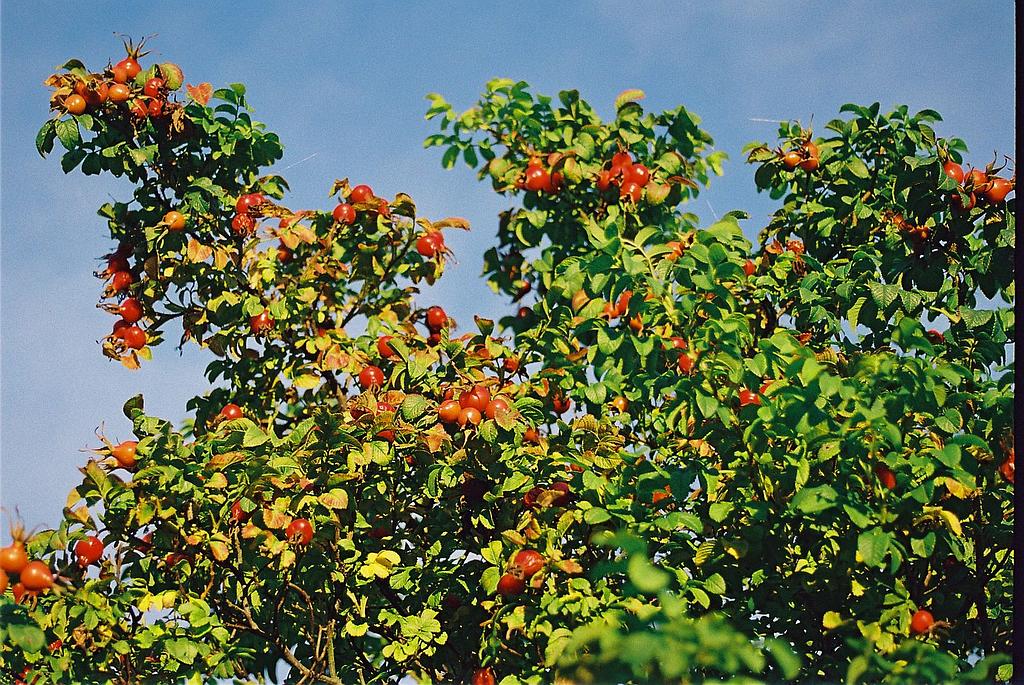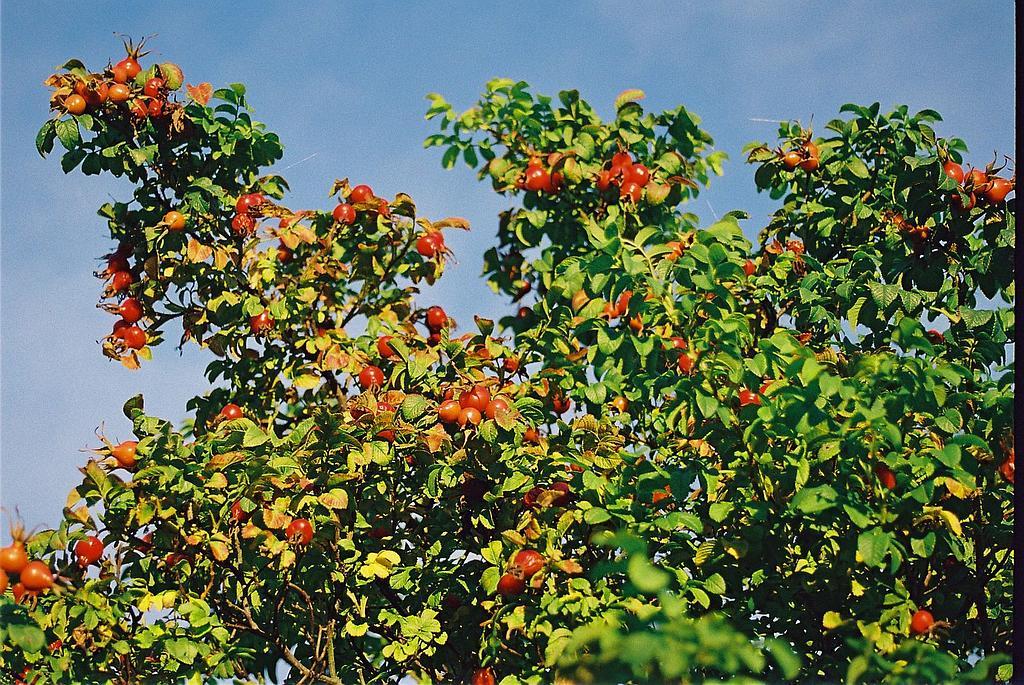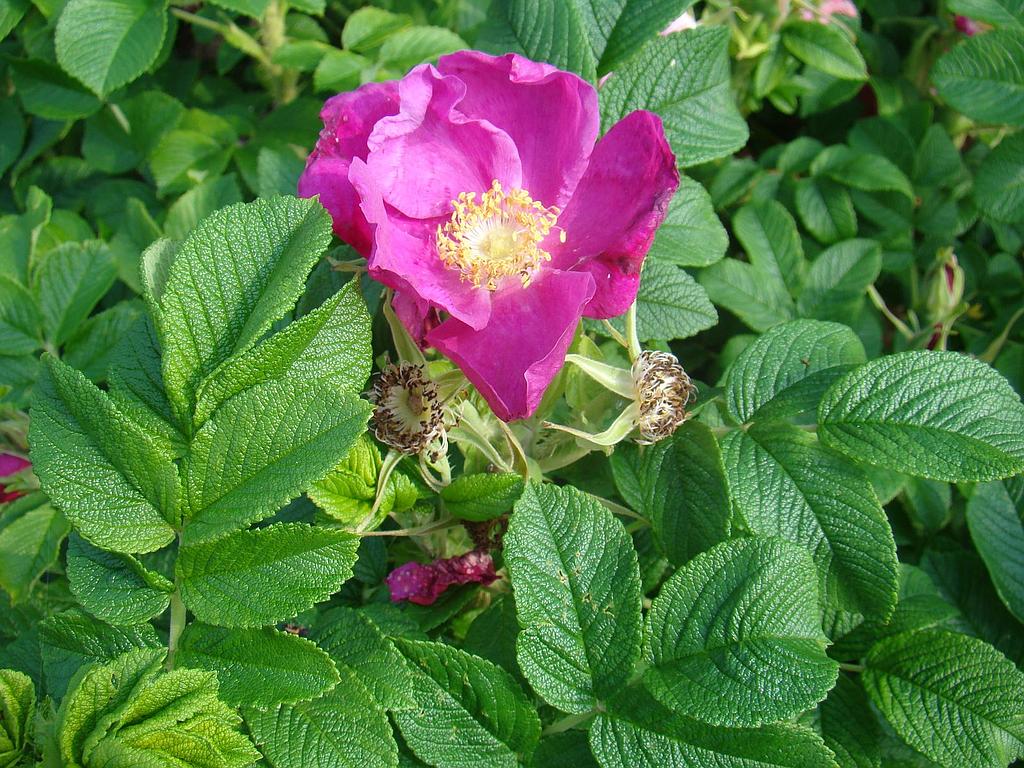R. rugosa
Rosa rugosa is the botanical species from which the Rugosa hybrids originated. Their large single, fragrant flowers can be white or deep purple-red. The wrinkle rose has a glossy green ribbed leaf. The large orange-red hips that appear from August are ideal for making jam, soup or a tisane. Tolerates a poor soil.
- Standplaats: Possible in partial shade (>3u sun)
- Plantafstand: 100cm
- Vorstbestendigd: tot -15°C
Rosa rugosa is the botanical species from which the Rugosa hybrids originated. This rose bears large single flowers that are reddish purple or white depending on the clones. The elongated flower buds are particularly elegant. The glossy green ribbed foliage is distinct from the foliage of other roses, is attractive and highly disease resistant. R.rugosa, the Japanese hip rose also called the wrinkle rose, has beautiful autumn colours and then turns golden yellow. It is a hardy plant that blooms until late autumn. From August the red-orange rose hips appear, which are excellent to use in the kitchen as jam or soup. They are also dried for tisanes, tea. Large numbers of R. rugosa have been planted along the coast or along the highways. They easily make offshoots. Rosa rugosa tolerates poor soil and therefore also sandy soil. We often meet them in the dunes.
The Rosa rugosa 'Alba' and Rosa rugosa 'Rubra' can also be found on the market, which have been selected in terms of colour.
Rosa rugosa is the botanical species from which the Rugosa hybrids originated. This rose bears large single flowers that are reddish purple or white depending on the clones. The elongated flower buds are particularly elegant. The glossy green ribbed foliage is distinct from the foliage of other roses, is attractive and highly disease resistant. R.rugosa, the Japanese hip rose also called the wrinkle rose, has beautiful autumn colours and then turns golden yellow. It is a hardy plant that blooms until late autumn. From August the red-orange rose hips appear, which are excellent to use in the kitchen as jam or soup. They are also dried for tisanes, tea. Large numbers of R. rugosa have been planted along the coast or along the highways. They easily make offshoots. Rosa rugosa tolerates poor soil and therefore also sandy soil. We often meet them in the dunes.
The Rosa rugosa 'Alba' and Rosa rugosa 'Rubra' can also be found on the market, which have been selected in terms of colour.
- Standplaats: Possible in partial shade (>3u sun)
- Plantafstand: 100cm
- Vorstbestendigd: tot -15°C
Alternative plants:
Recently viewed:
Order on our website, by mail or phone
We are happy to help you
